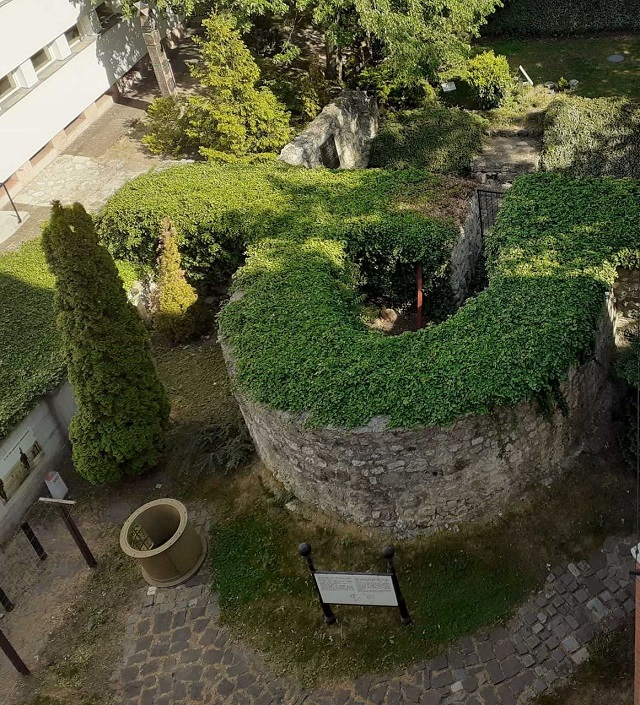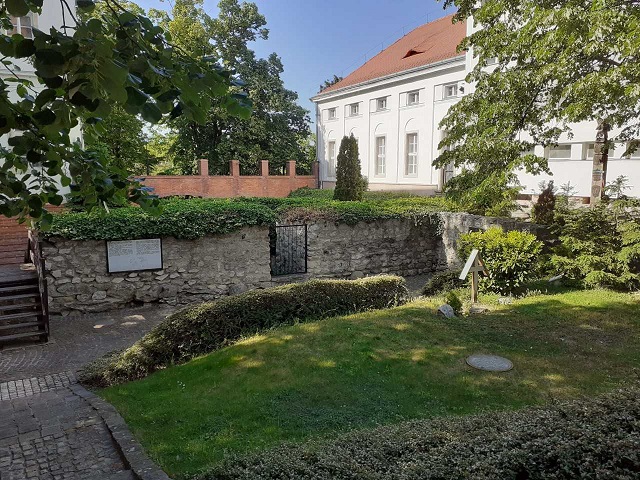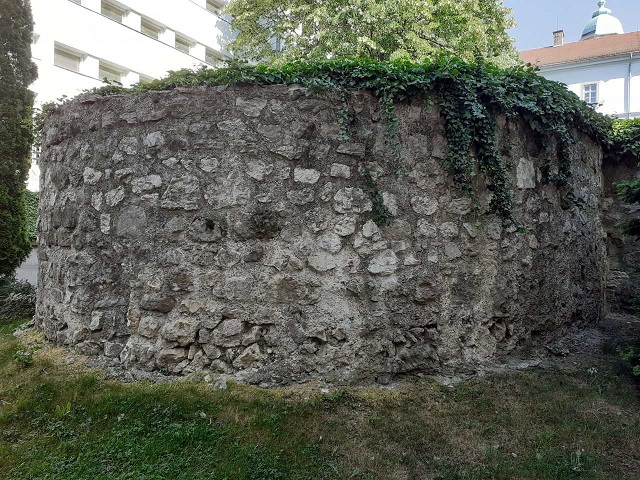In the 1980s, the museum planned to extend the museum building with a new wing at the eastern part of the courtyard. Due to the emerging archaeological finds during the construction works and the preceding archaeological surveys, in 1987 a preventive excavation started. During the excavation that lasted till 1990, remains of a tower and sections of the city wall had been found.
King Béla IV, after the Mongol invasion in Hungary (1241-1242), founded the castle of “Pestújhegy” (castrum novi montis Pestiensis) at the opposite side of the Danube of the burnt down city of Pest, thus establishing one of the first stone-walled cities of the Hungarian Kingdom. The walls of the city founded by Béla IV surrounded the entire plateau of the hill. The walls, wherever it was possible, followed the steep, rocky edge of the hilltop. Today many sections of the medieval wall are well known from archaeological surveys. The wall was protected by evenly placed towers, for example on the western wall rectangular and half-rounded towers were placed at regular, 65-70m intervals. The remains found in the Military History Museum’s courtyard are of a significant half-rounded tower of the Béla IV era fortification.
In the courtyard other finds too can observed. During the aforementioned excavation, south of the city wall, bases of two 14th-century houses were also found.







